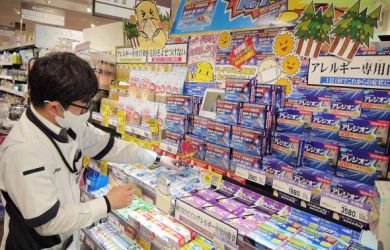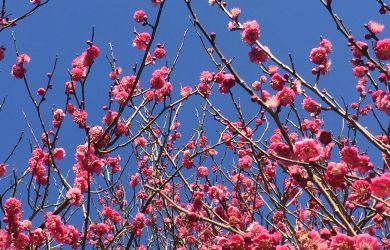
Originally published on metropolis.co.jp on August 2012
Yurei Attack! The Japanese Ghost Survival Guide is the latest book by husband-and-wife author duo Hiroko Yoda and Matt Alt. Following Yokai Attack! (about monsters), and Ninja Attack!, their latest effort is an informative compendium of yurei (or ghost) stories from Japanese history, for adults and children alike. With a chatty, readable style backed up by serious scholarship and brought to life by Shinkichi’s grisly illustrations, Yurei Attack! is a window into this rich vein of Japanese culture. Metropolis gives you a sneak peek just in time for Obon.
Text below extracted from Yurei Attack! by Hiroko Yoda & Matt Alt, illustrations by Shinkichi.
For a bonus piece by Matt Alt on why August is spooky season, and a Q&A with Matt and Hiroko, see the next page.
Know your Yurei

Yurei come in many shapes and forms. Yet there are traits and accoutrements common to many of them. Very few if any yurei possess all of these features, but each is strongly indicative of things from beyond the grave. We created this composite illustration to help familiarize you with the basics. Think of it as a “generic Japanese ghost.”
1. Triangular headdress
This archaic Buddhist funerary headdress hasn’t been used in actual funerals for generations, but it is a standard prop for yurei.
2. Long, stringy, unkempt hair
Hair, particularly hair that grows out of control, is a common feature of Japanese ghost stories.
3. Crazed/aggrieved expression
What, were you expecting
a warm smile?
4. Dangling hands
Don’t let the limp wrists fool you. They aren’t an indication of weakness, but rather a signal that you’re dealing with the dead.
5. White kimono
The kimono of the dead are folded in the opposite manner of that of living people. (For example, the usual left-over-right lapel style would be right-over-left for a body at a funeral.)
6. Hitodama
Although literally translated as “human souls,”
these weird fireballs are generally considered manifestations of ghostly phenomena rather than actual spirits. They are commonly seen
alongside yurei.
7. Lack of feet
The absence of a physical connection to the ground is a hallmark yurei characteristic.
Otsuyu

Gender: Female
Age at death: 16 or 17 (estimated)
Cause of death: Heartbreak
Place of internment: Shin-Banzuin Cemetery
Location of haunting: Nezu, Tokyo
Form of Attack: Carnal pleasures
Existence: Believed to be fictional
Threat Level: Medium
The daughter of a hatamoto, a high-ranking samurai in the service of the Shogun, beautiful young Otsuyu’s fate was sealed after a chance introduction to a masterless ronin named Hagiwara Shinzaburo. It was love at first sight for both sides, but a lowly ronin could never ask for the hand of a hatamoto’s daughter in marriage—least of all from Otsuyu’s father, a notoriously stern fellow with a nasty reputation for skewering those who displeased him.
Pining for a true love she believed had abandoned her, Otsuyu began to waste away and died, followed shortly thereafter by her heartbroken maidservant Oyone.
Learning of Otsuyu’s untimely death, Shinzaburo’s misery knew no bounds. He inscribed her name on a memorial tablet and placed offerings before it daily. When Obon, the festival of the dead, rolled around that summer, he laid food and lanterns before the tablet as was the custom, and prepared for another night of lamenting love lost.
No sooner than Shinzaburo had lit the lanterns than he heard the clack-clack of wooden geta on the street outside his house. Sliding open a window, he caught sight of a pair of beautiful ladies. The younger of the two, apparently a servant, illuminated the way with a peony lantern. Shinzaburo rubbed his eyes. Could it be? There was no question about it: it was Otsuyu and her maid!
“I thought you were dead!” he cried.
“And I you,” replied Otsuyu in equal astonishment.
Shinzaburo quickly invited the pair into his home, where the trio pieced together how both sides had been deceived to keep them apart. They plotted through the night and separated at daybreak, with a promise that they would soon never part again. For seven nights—always at night—Otsuyu and her maidservant returned to cement their plans.
Shinzaburo’s neighbor, a fortune-teller, overheard the regular midnight chatter and grew suspicious. He peered into Shinzaburo’s home through a crack in the wall. What he saw chilled him to the bone. Shinzaburo was carrying on an animated conversation with a pair of desiccated corpses, their kimono stained and tattered, their eye sockets gaping holes.
The next day, the fortune-teller confronted Shinzaburo, who reluctantly confessed his plans to elope. But he refused to believe about Otsuyu’s true form. The fortune-teller convinced Shinzaburo to pay a surprise visit to the neighborhood where Otsuyu claimed to live. Shinzaburo wandered from door to door asking after the pair, but the neighbors claimed no knowledge. On his way home, Shinzaburo took a short cut through Shin-Banzuin temple, and that is when he spotted them: not the girls, but a pair of fresh grave-markers bearing the names “Otsuyu” and “Oyone.”
Rushing back, the terrified Shinzaburo consulted the abbot of his local temple, who prescribed consecrated ofuda talisman slips to be pasted over his abode’s every opening to keep the spirits at bay. Night after night, he desperately tried to ignore the heartbreaking wails of Otsuyu and Oyone, in turns angry and piteous, issuing from beyond his walls. Desperate to help her mistress, the ghostly Oyone threatened Shinzaburo’s servants, a married couple who had long served the ronin. With their own fates at stake, the husband and wife bargained with the ghost. The rest is history. It isn’t known how Oyone obtained the money, but obtain it she did, and Shinzaburo’s treacherous servants peeled just one ofuda from a crack in the wall of their master’s residence.
The next morning, Shinzaburo was found dead in his bedchamber—his face a grimace of terror, and beside him the skeleton of a long-dead woman, its arms thrown around his neck in a final, eternal embrace. At the behest of the abbot with whom he had first consulted, Shinzaburo was buried alongside Otsuyu and Oyone.
Taira no Masakado

Date of death: March, 940
Age at death: About 37
Type of ghost: Onryo
Form of attack: Death, disaster, and misfortune
Existence: Historical fact
Threat level: Extremely high
A minor but successful warlord, Masakado’s ambitions put him at odds with the Imperial government of Kyoto. Establishing an independent kingdom in the Kanto region, he proclaimed himself the “new Emperor of all Japan.”
Within two months he was dead, felled by an arrow between the eyes during a ferocious battle. The Emperor’s men decapitated the corpse and carried the head to Kyoto for a public showing.
Infuriated at the insult of being removed from its body, Masakado’s head took to the skies over Kyoto and returned to the Kanto region in a frantic quest for its missing body. Finally spent from the fruitless effort, the severed head crashed from the sky over a tiny fishing village called Edo (which would centuries later grow into the metropolis of Tokyo). It came to rest on a plot of land known forever after as Masakado no Kubizuka (The Hill of Masakado’s Head). Terrified villagers washed the head, buried it, and erected a memorial stone to appease its fury. Generations thereafter tended to it as a symbol of anti-authoritarian power.
Over the centuries, a great many calamities have been ascribed to Masakado’s influence. Some of the most recent make up a “greatest hits” list of sorts.
When the Great Kanto Earthquake of 1923 destroyed much of the city, Tokyo’s Ministry of Finance took the opportunity to level the Hill of Masakado’s Head and erect a temporary office building. Within two years some 14 employees had died, felled by accidents, illnesses, and other misfortunes—including the Minister of Finance himself. In the meantime, a spate of inexplicable injuries broke out among the other employees. Mounting fear led officials to raze the building and rebuild the hill after holding a Shinto ritual to soothe the angry spirit. Thereafter, the government held a small service in its honor every year, until the outbreak of World War II.
In 1940, the thousand-year anniversary of the warlord’s death, lightning struck the Ministry of Finance, touching off a fire that destroyed much of the structure adjacent to Masakado’s hill. In response, the latest Minister of Finance (undoubtedly moved by the fate of his predecessor) sponsored an extravagant ceremony to appease Masakado’s angry soul once again, erecting a stone memorial that stands on the site to this very day.
But the story doesn’t end there. When the American forces took control of Japan after the war, they tried to raze the shrine to build a motor pool for military vehicles. During construction, a bulldozer inexplicably flipped over, killing the driver. A string of other accidents combined with pleas from local officials convinced the Americans to cancel the project, and Masakado once again enjoyed peace and quiet, and still does today.

Yurei Attack! The Japanese Ghost Survival Guide
By Hiroko Yoda and Matt Alt, illustrations by Shinkichi (Tuttle, July 2012, 192pp, ¥1,400). Available from major bookstores and Amazon.jp. Text abridged to fit. Excerpts reprinted with the kind permission of the publisher.
For a bonus piece by Matt Alt on why August is spooky season, and a Q&A with Matt and Hiroko, see the next page.







